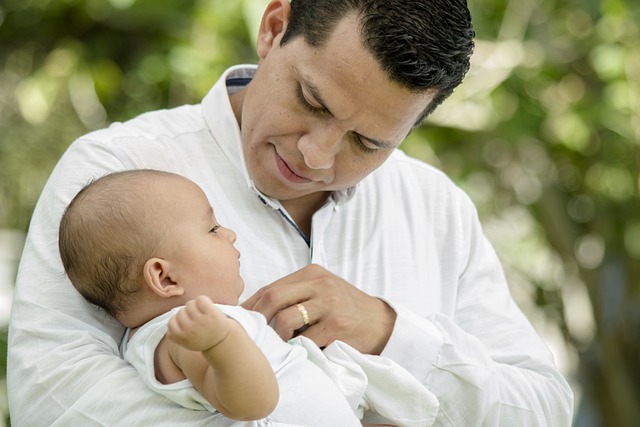Oregon's divorce laws provide a straightforward process with a no-fault system, emphasizing fairness through comprehensive guidelines. A key resource is the Oregon divorce guide, which outlines crucial aspects like filing procedures, asset division, and support determinations (child support divorce, spousal support/alimony). This guide ensures transparency, promotes open communication, and protects individuals' rights during emotionally challenging periods. Understanding these laws empowers couples to make informed decisions regarding support in divorce proceedings, ensuring stability for both parents and their children. Consulting legal professionals specialized in Oregon divorce law is essential for navigating these complex issues effectively.
“Navigating Oregon’s Complex Divorce Landscape: A Comprehensive Guide. If you’re considering a divorce in Oregon, understanding the state’s unique legal framework is essential for a smooth transition. This comprehensive guide delves into every aspect of Oregon divorce and support, from the initial steps to initiate the process to the intricate calculations of child support and property division. Whether you’re looking to learn about alimony, navigate the complexities of equitable distribution, or ensure a supportive environment during this challenging time, this Oregon divorce guide provides invaluable insights.”
- Understanding Oregon Divorce Law: A Comprehensive Overview
- Navigating the Process: Steps to Initiate a Divorce in Oregon
- Child Support in Oregon Divorces: Calculations and Obligations
- Alimony and Spousal Support: When and How is It Awarded?
- Division of Property: Equitable Distribution Under Oregon Law
- Legal Considerations for a Smooth Divorce Transition
Understanding Oregon Divorce Law: A Comprehensive Overview

Oregon divorce law outlines a clear process for couples seeking to dissolve their marriage. Understanding these laws is crucial for anyone navigating the complexities of divorce and support in Oregon. The state follows a no-fault divorce system, meaning either party can petition for divorce without having to prove fault or blame on the other spouse. This approach streamlines the legal process and aims to reduce conflict during what’s often an emotionally charged time.
An Oregon divorce guide should cover key aspects like filing requirements, grounds for divorce, and how assets and debts are divided. One of the most significant considerations in any divorce is support – both child support divorce and spousal support (also known as alimony) are determined based on factors outlined by state law. This includes the length of the marriage, each spouse’s earning capacity, and the standard of living during the marriage, among others. Having a comprehensive understanding of these legal considerations can help individuals make informed decisions throughout the divorce process, ensuring they receive fair support during this challenging period.
Navigating the Process: Steps to Initiate a Divorce in Oregon

Navigating the process of a divorce can be complex, but understanding the steps involved in Oregon can help couples move forward. The first step is to determine if reconciliation is impossible and make the decision to file for divorce. In Oregon, either party can initiate the process by filing a Petition for Divorce with the court. This document outlines key details like the reason for divorce, property division, and any requests for support.
Once filed, the court will issue a Summons, notifying your spouse of the pending divorce. From here, both parties are required to exchange financial disclosures, including income, assets, and debts. This transparent process is crucial under Oregon divorce law as it facilitates a fair and equitable division of property and support during divorce, especially when there are children involved.
Child Support in Oregon Divorces: Calculations and Obligations

In Oregon, child support calculations are determined by using a formula that considers both parents’ income levels and the time each parent spends with the children. The state’s guidelines aim to ensure a fair and reasonable contribution from each parent based on their financial ability. Key factors include each parent’s gross income, the number of children involved, and the custody arrangement—specific days or weeks each parent has physical and legal custody. Oregon divorce law requires parents to cooperate in establishing a support plan that aligns with these guidelines, prioritizing the best interests of the child.
Obligations for supporting a child during and after a divorce are legally binding. Non-custodial parents are typically required to pay a percentage of their disposable income towards child support based on the calculation formula. These obligations can be modified if significant changes occur in either parent’s financial situation or living arrangements, as long as such modifications remain in line with Oregon’s divorce guide and the best interests of the child are considered.
Alimony and Spousal Support: When and How is It Awarded?

In an Oregon divorce, alimony, or spousal support, is a crucial legal consideration that can significantly impact the post-divorce financial well-being of both parties. Unlike child support, which is primarily focused on the care and maintenance of minor children, spousal support is intended to provide economic security for a spouse who may have relied on their partner’s income during the marriage. The Oregon divorce law outlines specific criteria for awarding spousal support, which includes factors such as the length of the marriage, each spouse’s earning capacity, their need for support, and any contributions made by one spouse to the other’s education or career advancement.
When considering support in a divorce, an Oregon divorce guide suggests that courts will evaluate both spouses’ financial situations, including assets, debts, and future prospects. If a spouse has a lower income or lacks sufficient skills or resources to become self-sufficient, they may be entitled to receive spousal support during and/or after the divorce. The amount and duration of support are determined on a case-by-case basis, taking into account the unique circumstances of each marriage and divorce. It’s important for individuals going through a divorce to understand their rights and obligations regarding support, as it can play a significant role in facilitating a smooth transition into separate lives.
Division of Property: Equitable Distribution Under Oregon Law

In an Oregon divorce, the division of property is a critical aspect governed by state law, which emphasizes equitable distribution. This means that assets and debts acquired during the marriage are divided fairly, considering each spouse’s contributions to the marital estate. The primary goal is to ensure both parties receive a just share, regardless of who earned more money or contributed more significantly to the family. Oregon divorce courts examine various factors to determine an equitable split, including but not limited to duration of the marriage, age and health of each spouse, earning capacity, and the needs of any children involved.
When it comes to support during and after divorce, both child support and spousal support (also known as alimony) are determined based on Oregon divorce law. Child support is calculated using specific guidelines that consider factors such as income, custody arrangements, and the financial needs of the children. Spousal support, on the other hand, may be awarded if one spouse can demonstrate a need for financial security post-divorce and the other spouse has the ability to provide it. This aspect of Oregon divorce guides couples through the process of ensuring financial stability for both themselves and their children during what can be an emotionally challenging time.
Legal Considerations for a Smooth Divorce Transition

Navigating the complexities of a divorce can be challenging, but understanding the legal considerations can help ensure a smoother transition. Oregon divorce law outlines clear guidelines for dividing assets, debts, and, importantly, determining support in divorce proceedings. For parents going through a divorce, child support divorce arrangements are a crucial aspect to consider in an Oregon divorce guide. This involves assessing factors such as each parent’s income, the time spent with children, and their needs to establish a fair and reasonable support system during divorce.
An Oregon divorce guide can provide valuable insights into managing these aspects effectively. It’s essential to consult legal professionals who specialize in divorce and support to ensure compliance with state laws and protect one’s rights. By doing so, individuals can focus on the future while ensuring their current needs and those of their children are met during this transition period.
